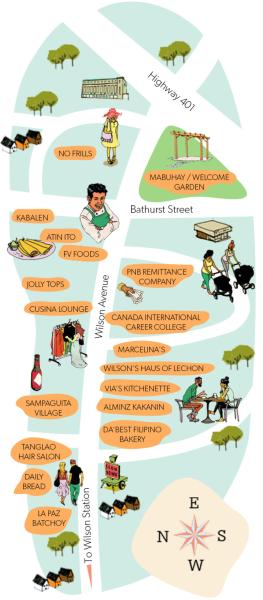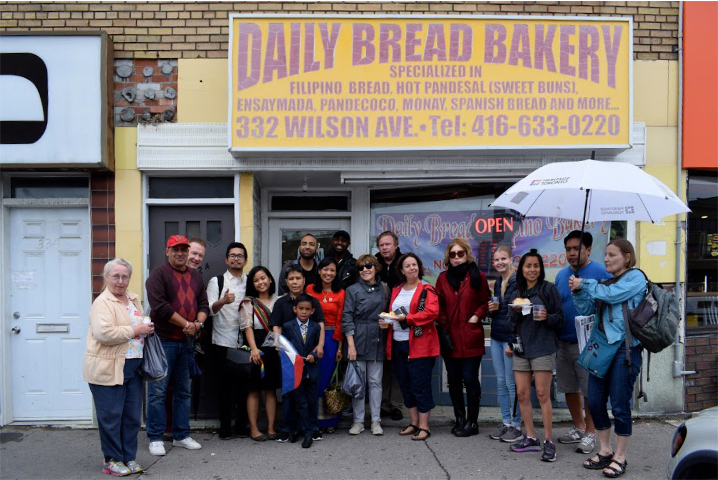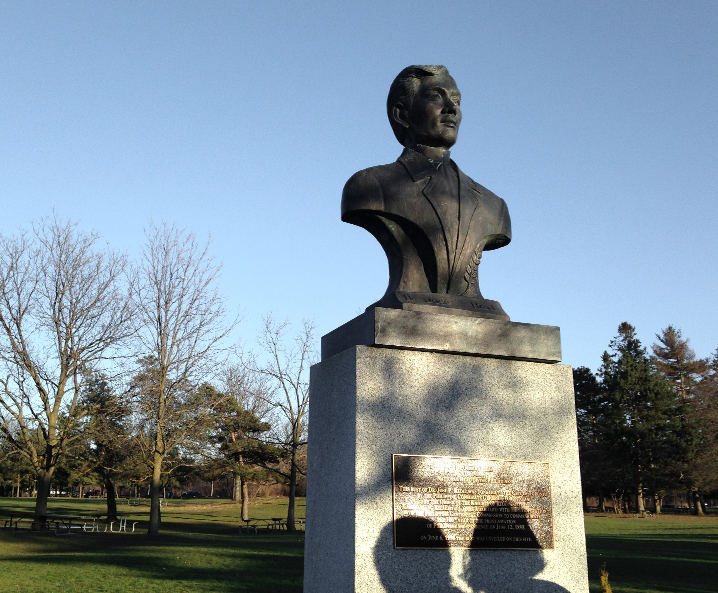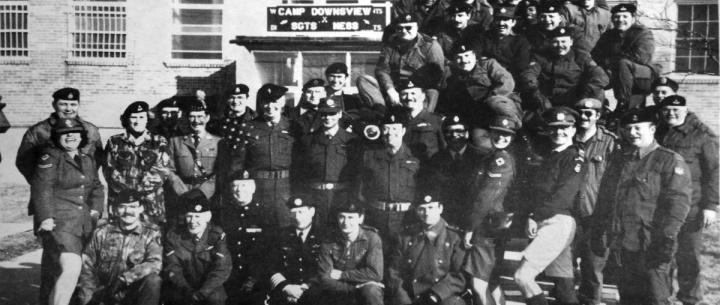Toronto has been a destination for many Filipinos seeking opportunity and a new place to call home since the 1960s . At first the community tended to gather downtown around Church St, Parliament Street, and St James Town living in high rise apartments.

But with the arrival of many Filipino health care workers, caregivers and permanent residents in the 1980s, those seeking community and culture gravitated to Downsview and the wider North York area. The Wilson and Bathurst intersection is now known to many as Little Manila, a thriving hub of Filipino businesses, restaurants and services. Heritage Toronto and Jane’s Walk guides have been offering animated and informative walking tours of the area since 2016 highlighting the changes and transitions in retail and residential patterns.
“Filipinos who came here to work were looking for a place to unwind with others, to enjoy some familiar food and culture. The conditions for success for residential and retail rentals were present at Bathurst and Wilson,” explains Diana Rolden, an intern architect and one of the walking tour guides. A first generation Filipino herself, Diana arrived here in 2011 settling in the Finch and Bathurst area with her family. She immediately set about studying census data on Tagalog speakers in different Toronto neighbourhoods and interviewing shopkeepers and locals to figure out how the area became a magnet for Filipinos by the 1990s.

“Talking to community people, they said that the area seemed to have been established by Filipino live-in caregivers who made the most of the affordable rents offered in nearby mid and high rise apartment buildings along Bathurst and Wilson,” explains Roldan. Most of the caregivers lived with their host families during the week, but on weekend days off, they stayed in their own rented apartments, heading out to the local strip malls, parks and community amenities to socialize and shop. “Sometimes two or three women shared an apartment, to save money and have more to send back home to relatives,” she explains. After two years they could bring their own families over and that often meant they stayed in the area that was familiar and friendly. Local settlement services for Filipinos have expanded including the establishment of the Kababayan Multicultural Centre at the Bathurst Finch Hub in 2013 which also hosts an active community garden and farmers market.

“Every year there seems to be new Filipino businesses here,” says Roldan, “like restaurants, or a convenience store that has a little hair salon in behind, or shops that also offer remittance services. On the second level there are places like language schools, jewelry stores, law offices and job training centres for caregivers. The businesses look small but they serve many needs.”

According to 2016 census data, over 250,000 Filipino Canadians now call Toronto home and celebrate their heritage with pride including a flag raising at City Hall and year-round events that take place in and around Downsview. This includes the Taste of Manila food fest held in August and the annual Salu Salo picnic celebrating Philippine Independence Day in June. Now 20 years old, the festival is held in nearby Earl Bales Park and brings together Filipinos to celebrate their heritage with food, film screenings, martial arts displays, dancing and a basketball tournament at Downsview Park’s HoopDome. Also marking the significance of the area to Filipinos is a bust of national hero Jose Rizal, a poet and essayist of the 19th century, who inspired the nationalist movement that eventually ended Spanish colonial rule. In 2016 Mabuhay Gardens, a parkette near Wilson and Bathurst, was dedicated by local Councillor James Pasternak in recognition of the local Filipino community.

More Stories

De Havilland Aircraft
Starting in the late 1920s, land in the Downsview area was being used for airfields—Barker Field, the Canadian Express Airport and the Toronto Flying Club. In April 1929, the de Havilland Airfield was built after de Havilland Aircraft of Canada purchased 70 acres of farmland along Sheppard Avenue West.

Life on the Downsview Base
The presence of the Canadian military in Downsview was evident in signage, fencing, and occasional truck and air traffic but for the most part, life inside the compound was pretty mysterious to outsiders. At its peak in the 1970s and 80s, approximately 3,000 military personnel and their families answered the call of duty at CFB Toronto.
